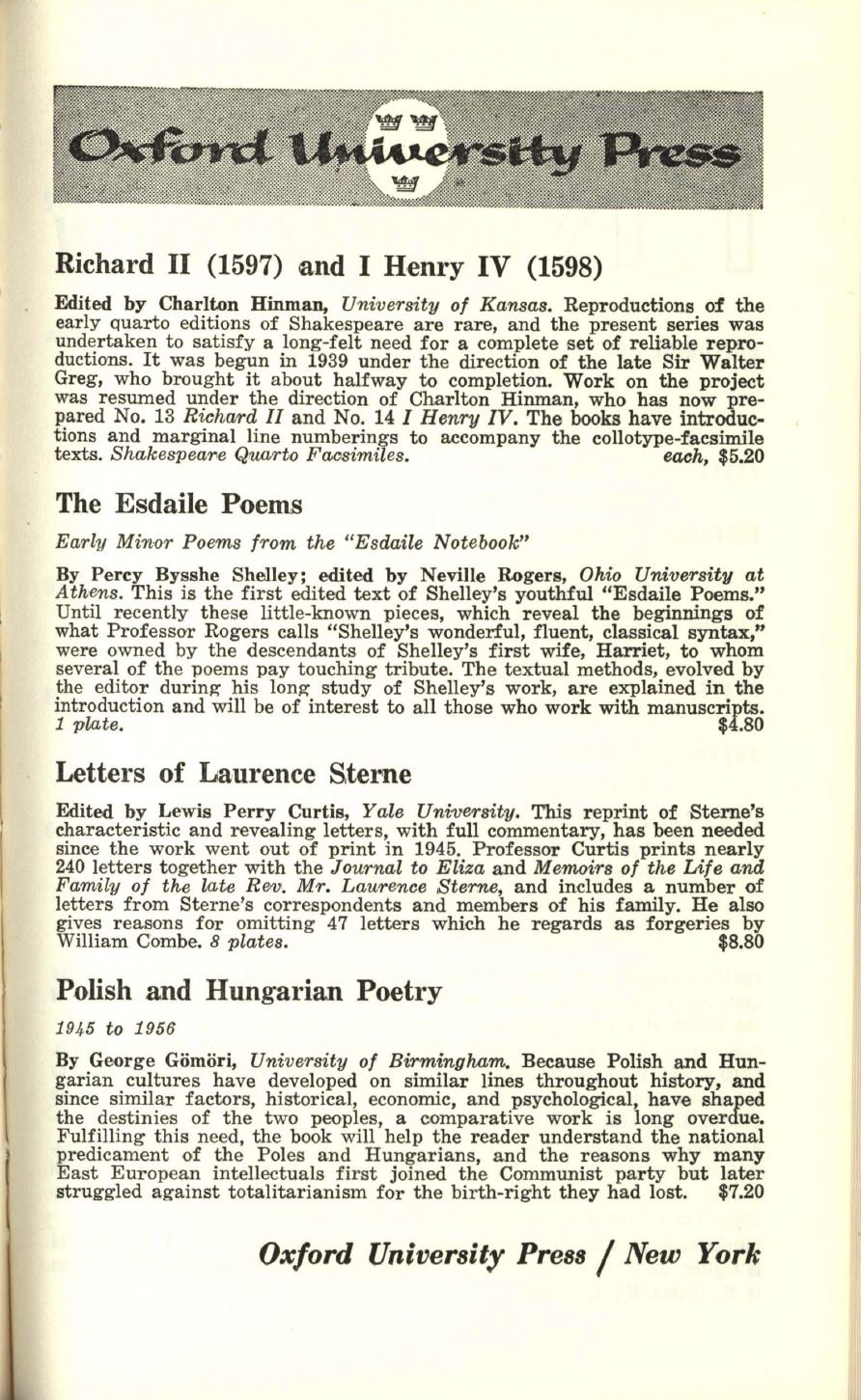
Richard II (1597) and I Henry IV (1598)
Edited by Charlton Hinman,
University of Kansas.
Reproductions of the
early quarto editions of Shakespeare are rare, and the present series was
undertaken to satisfy a long-felt need for a complete set of reliable repro–
ductions.
It
was begun in 1939 under the direction of the late Sir Walter
Greg, who brought it about halfway
to
completion. Work on the project
was resumed under the direction of Charlton Hinman, who has now pre–
pared No. 13
Richard II
and No. 14
I Henry IV.
The
books
have introduc–
tions and marginal line numberings to accompany the collotype-facsimile
texts.
Shakespear;e Quarto Facsimiles.
each, $5.20
The Esdaile Poems
Early Minor Poems from the "Esdaile Notebook"
By Percy Bysshe Shelley; edited by Neville Rogers,
Ohio University at
Athens.
This is the first edited text of Shelley's youthful "Esdaile Poems."
Until recently these little-known pieces, which reveal the beginnings of
what Professor Rogers calls "Shelley's wonderful, fluent, classical syntax,"
were owned by the descendants of Shelley's first wife, Harriet, to whom
several of the poems pay touching tribute. The textual methods, evolved by
the editor during his long study of Shelley's work, are explained in the
introduction and will be of interest to all those who work with manuscripts.
1
plate.
$4.80
Letters of Laurence Sterne
Edited by Lewis Perry Curtis,
Yale University.
This reprint of Sterne's
characteristic and revealing letters, with full commentary, has been needed
since the work went out of print in 1945. Professor Curtis prints nearly
240 letters together with the
Journal
to
Eliza
and
Memoirs of the Life and
Family of the late Rev. Mr. Laurence Sterne,
and includes a number of
letters from Sterne's correspondents and members of his family. He also
gives reasons for omitting 47 letters which he regards as forgeries by
William Combe. 8
plates.
$8.80
Polish and Hungarian Poetry
1945 to 1956
By George Gomori,
University of Birmingham.
Because Polish and Hun–
garian cultures have developed on similar lines throughout history, and
since similar factors, historical, economic, and psychological, have shaped
the destinies of the two peoples, a comparative work is long overdue.
Fulfilling this need, the book will help the reader understand the national
predicament of the Poles and Hungarians, and the reasons why many
East European intellectuals first joined the Communist party but later
struggled against totalitarianism for the birth-right they had lost.
$7.20
Oxford University Press
/
New York


